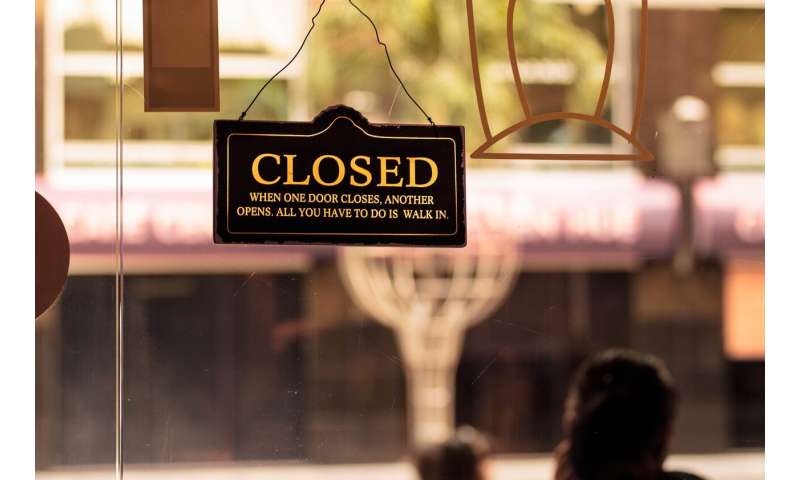
Tier 1 restrictions in England have had “little impact” on COVID-19 transmission according to new research from the University of East Anglia.
Researchers studied how well the UK Government’s tier system worked in England, before the second lockdown came into effect.
They found that Tier 1 restrictions were largely inadequate and Tier 2 rules were only effective in around half of local authority areas. Tier 3 restrictions seemed to be effective in most areas.
But the researchers say the real problem lies with regions not being allocated to the most appropriate tier swiftly enough.
They hope their findings will help make the tier system work more effectively as we come out of lockdown on December 2.
Due to the rapid-response nature of this research, it has not yet undergone peer review.
Lead researcher and COVID-19 expert Prof Paul Hunter, from UEA’s Norwich Medical School, said: “The three-tier system in England was brought in on October 14 in an attempt to control the spread of COVID-19 and prevent the NHS form being overwhelmed. The system lasted until November 5, when a new national lockdown was imposed.
“Each tier had different lockdown rules—with Tier 1 being the most relaxed, and Tier 3 having the strictest rules.
“Higher tiers allowed less social interaction between people from different households, especially in enclosed environments. For example, Tier 1 allowed for groups of six from different households to meet indoors or outdoors. Tier 2 permitted such groups to meet only outdoors, while Tier 3 did not allow different households to meet indoors or outdoors at all, unless they were part of support ‘bubbles.”
“There were also social mixing rules and restrictions associated with many other activities, such as sport, visiting restaurants, and travel.
“We wanted to analyze how well that system worked, which is particularly important right now because we are due to revert back to the tier system, or a version of it, when lockdown ends on December 2.”
The research team analyzed new cases of COVID-19 across 315 local authorities in England from October 14 to November 12.
They estimated the R number at different time points in each English local authority and found that there was little difference between authorities in the rate of infection when the tier system came into force, but by day 14 the R value in Tier 3 authorities had fallen to about 0.9, in Tier 2 to about 1.0 and in Tier 1 the R value was about 1.5.
Prof Hunter said: “We show quite clearly that Tier 1 restrictions were inadequate. They had little impact on transmission and allowed exponential growth in the large majority of authorities such as Kingston upon Hull, until it was moved into Tier 2, and Kings Lynn and West Norfolk.
“We found that the impact in Tier 2 areas was mixed. Exponential growth was being seen in about about half of authorities so the restrictions were not adequate in those areas. However, the infection rate declined in other areas so the restrictions seemed to be enough in some places.
“Tier 3, which barred all indoor household mixing in areas such as Rossendale and South Ribble authorities in Lancashire had the most impact and was effective in most of the authorities in that top tier.”
“Based on this analysis, almost all of the regions in Tier 1 should have been in Tier 2. And about half of Tier 2 should have been in Tier 3.
“Whilst an additional even more restrictive tier may be needed, the evidence from Tier 3 areas so far suggests that few local authorities would have needed such a more restrictive tier.
“In our view, the main problem was not actually the tiers, but that local authorities were not being put in the most appropriate tier quickly enough.
“The three-tier system would likely have been sufficient to control the epidemic if all authorities had been moved out of Tier 1 into Tier 2, and if those authorities where the epidemic was still increasing in Tier 2 had been moved into Tier 3 more swiftly.
“If authorities were not moved up a tier until the number of rising cases had already gotten out of control, the horse had already bolted.
“What is needed as we move out of the national lockdown is a faster mechanism to identify those areas where the epidemic is not being controlled that can enable more timely placement into a more appropriate tier.”
Source: Read Full Article